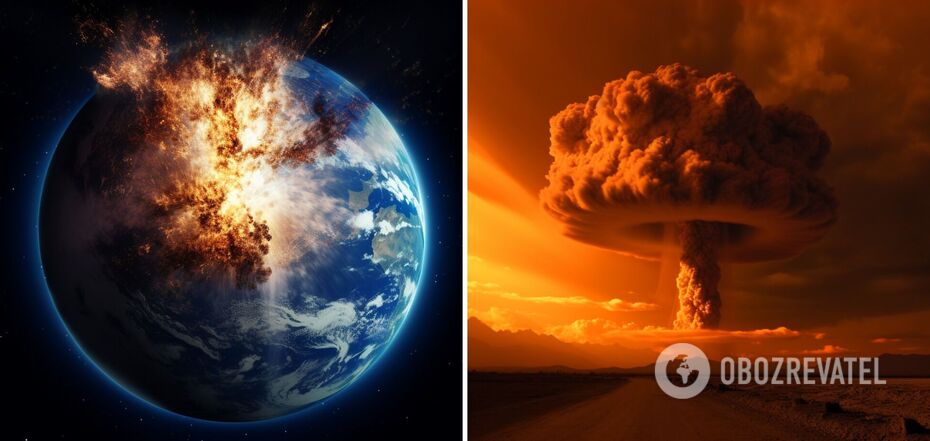Life
At what distance can you survive a nuclear explosion: scientists explained all the nuances
Nuclear weapons have only been used for warfare twice in human history - in 1945, when the U.S. detonated bombs over the Japanese cities of Hiroshima and Nagasaki. The consequences were so horrific that no one has resorted to such a thing since.
However, since the beginning of Russia's full-scale invasion of Ukraine, Russian officials have repeatedly threatened to use nuclear weapons. This cannot but cause fear, since it is the Russian Federation that possesses the largest arsenal of nuclear weapons in the entire world.
Not surprisingly, many people want to know what the chances of surviving a nuclear strike are. Scientists from AsapSCIENCE Channel have broken down this topic and explained how nuclear war can be used.
It's worth noting that it's very difficult to give a clear and accurate prediction because you have to consider not only the explosive power of a nuclear bomb, but also many other factors. In particular:
- what the weather will be on the day of the explosion and where the wind will blow;
- what time of day it will detonate;
- the location of the explosion - plain, mountains and so on;
- whether it will explode on the ground or in the air.
Still, certain predictions can be made.
The first thing that would threaten humans after a nuclear explosion is the possibility of flash blindness. It can occur in those directly observing the explosion, since about 35% of the energy of a nuclear explosion is released as thermal radiation, which propagates at about the speed of light. This loss of vision is usually temporary and lasts a few minutes.
The researchers' experiment looked at the explosion of a 1-megaton bomb - 80 times larger than the bomb detonated over Hiroshima, but much smaller than many modern nuclear warheads.
An explosion of such a bomb on a clear day would have caused blindness to people up to 21 kilometers away. If it had exploded at night, temporary blindness would have threatened everyone at a distance of up to 85 km.
The next would be a heat wave, which would threaten light first-degree burns to everyone in an area up to 11 km. People who would be within 8 km of the explosion would receive third-degree burns - destructive and blistering skin tissue. Such burns can be fatal if the victim does not get help in time.
Interestingly, people wearing white clothing will be more protected from the heat wave because the fabric of that color is able to reflect some of the energy. Those wearing dark clothing will be less fortunate.
But all this will not matter for those who will find themselves in the epicenter of the explosion, where the temperature will be hundreds of thousands of degrees. In Hiroshima, near the explosion, the temperature is estimated to have reached 300,000 degrees Celsius. At this temperature, people were almost instantly transformed into the simplest elements, such as carbon.
Another threat is the blast wave. It not only destroys everything in its path, but also creates devastating variations in atmospheric pressure.
Within 6 kilometers of the epicenter of the explosion, the wave will create 180 metric tons of force on the walls of small buildings, and the wind speed will reach 255 km/h. A kilometer away from the blast zone, the peak pressure will be four times greater, and the wind speed may reach 756 km/h.
Although this is not technically fatal for humans, the massive destruction will leave little chance of survival.
Survivors would have to face radiation poisoning and nuclear fallout, the spread of which is extremely difficult to predict due to the factors mentioned above. That said, if the bomb explodes in the air, the radiation will dissipate, but if it explodes on Earth, it will spread less.
Consider the fact that a recent study found radioactive carbon residue from Cold War nuclear bomb tests in the Mariana Trench, the deepest point in the world's oceans.
Previously OBOZREVATEL told about the scientists who showed what a nuclear war between the U.S. and Russia would look like.
Subscribe to OBOZREVATEL channels in Telegram and Viber to keep up with the latest developments.



























